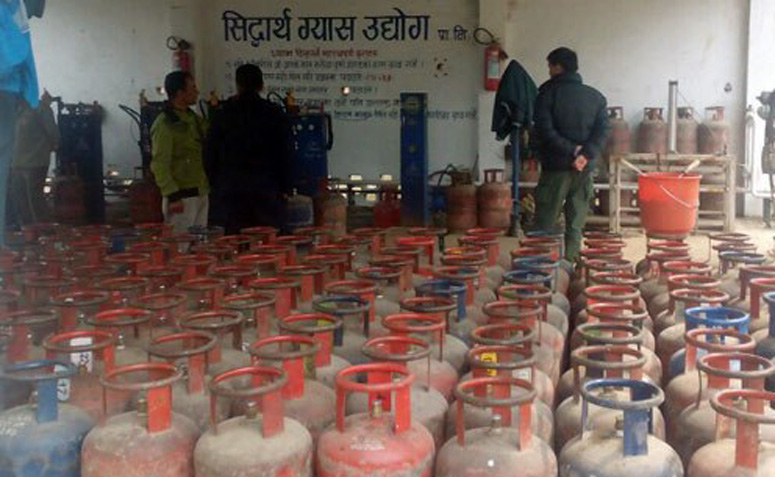Government mulls diversifying LPG import
Kathmandu, March 1
The government has resumed exploring the possibilities of importing liquefied petroleum gas (LPG) from other countries as the supply of cooking fuel from Indian Oil Corporation (IOC) continues to be erratic even after the border blockade ended last month.
The government has sent a four-member team to China today to explore the possibility of importing cooking fuel from there. The team, led by Joint Secretary at the Ministry of Supplies Uttam Nagina, comprises Under Secretary Nava Raj Dhakal, Section Officer Arjun Bhandari and Nepal Oil Corporation (NOC) Acting Director Birendra Goit. They will spend a week in China to conduct a detailed study.
A subsidiary of China National United Oil Corporation (PetroChina) has shown interest to supply LPG to Nepal, which is viable in terms of price quoted by the company, a high-level official at the Ministry of Supplies told The Himalayan Times. “The Chinese firm has assured us that the cost of LPG will be similar to the retail market price of cooking gas being imported from India.”
The government-owned oil giants of Nepal and China — NOC and PetroChina — had signed a framework agreement for the trade of fuel on October 28 of last year. However, the government-to-government deal needed to officially begin fuel trade between the two oil giants, which was expected to be sealed in the wake of the fuel crisis, has been stalled for long.
As the consumption of LPG has been increasing every passing year, the country has been facing short-supply from India during the winter season. According to NOC officials, the IOC refineries that are authorised to dispatch LPG to Nepal cut the load in the winter season, which in turn cripples the supply situation of LPG in the country.
Citing the protest at border points, IOC refineries — located at Barauni, Haldia and Mathura — collectively dispatched only around 11,000 tonnes of cooking gas from October to December of last year, whereas the country’s monthly demand hovers at around 30,000 tonnes. The supply of cooking gas in the month of January was equivalent to that of previous three months.
After the reopening of all trade routes, supply from India was expected to normalise from February. However, only 20,000 tonnes of cooking gas entered the country in February against NOC’s request with IOC to supply 33,000 tonnes, in consideration of the acute shortage of the commodity since the last four months, according to Mukunda Prasad Ghimire, spokesperson for NOC.
IOC, which used to supply 60 bullets (each of 18 tonnes capacity) each day from its refineries during normal times, has been sending only two-thirds of normal supply, as per NOC.
Earlier, the state-owned petroleum company had also approached Bangladesh Petroleum Corporation (BPC) of Bangladesh government to import cooking fuel from there. A team of NOC that had visited Bangladesh in mid-November to explore the possibility of importing cooking gas from Bangladesh, however, found that importing the fuel from Bangladesh was not feasible. It was not feasible to ferry liquefied natural gas that Bangladesh had pledged to supply in gas bullets in a similar manner as Nepal has been importing LPG from India.
It is reported that the team sent to China will discuss all relevant aspects of importing LPG, like price, loading method, loading place, transportation cost, and route to import LPG, among others. It has to be noted though that Nepal does not have the bullets needed to import LPG and the country will have to rely on China to provide the means of transport if the LPG deal is materialised with the subsidiary of PetroChina.






